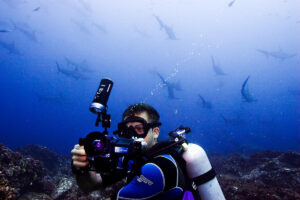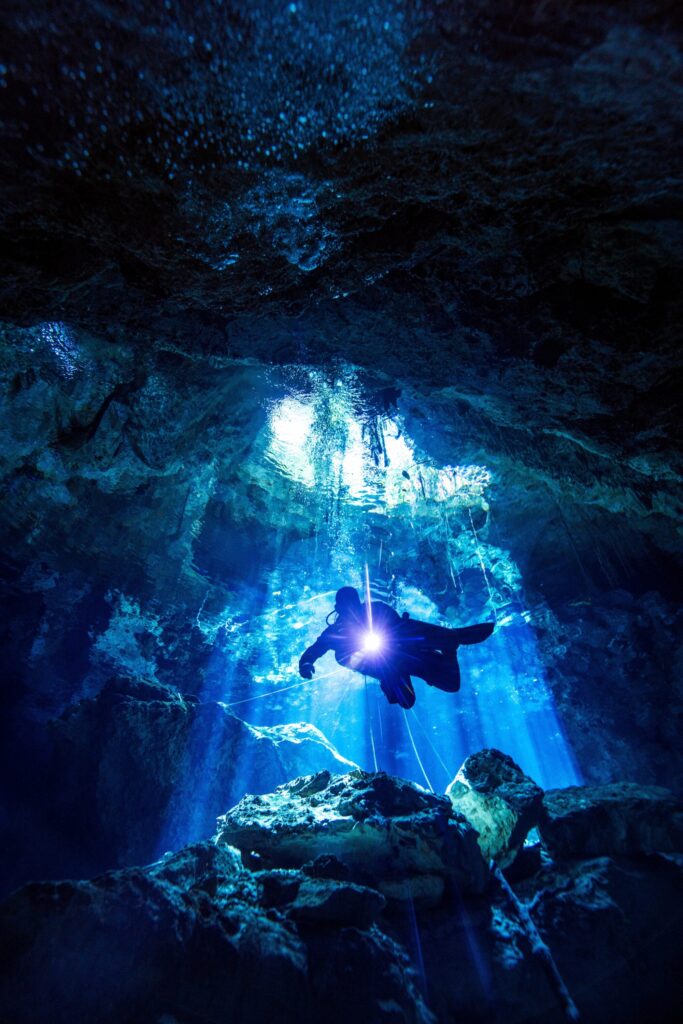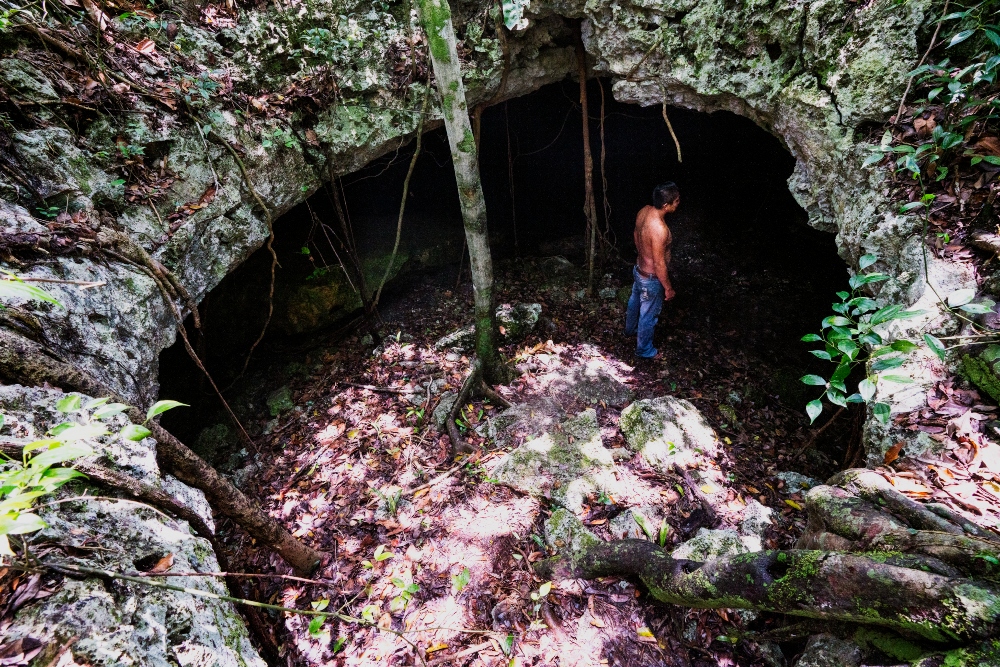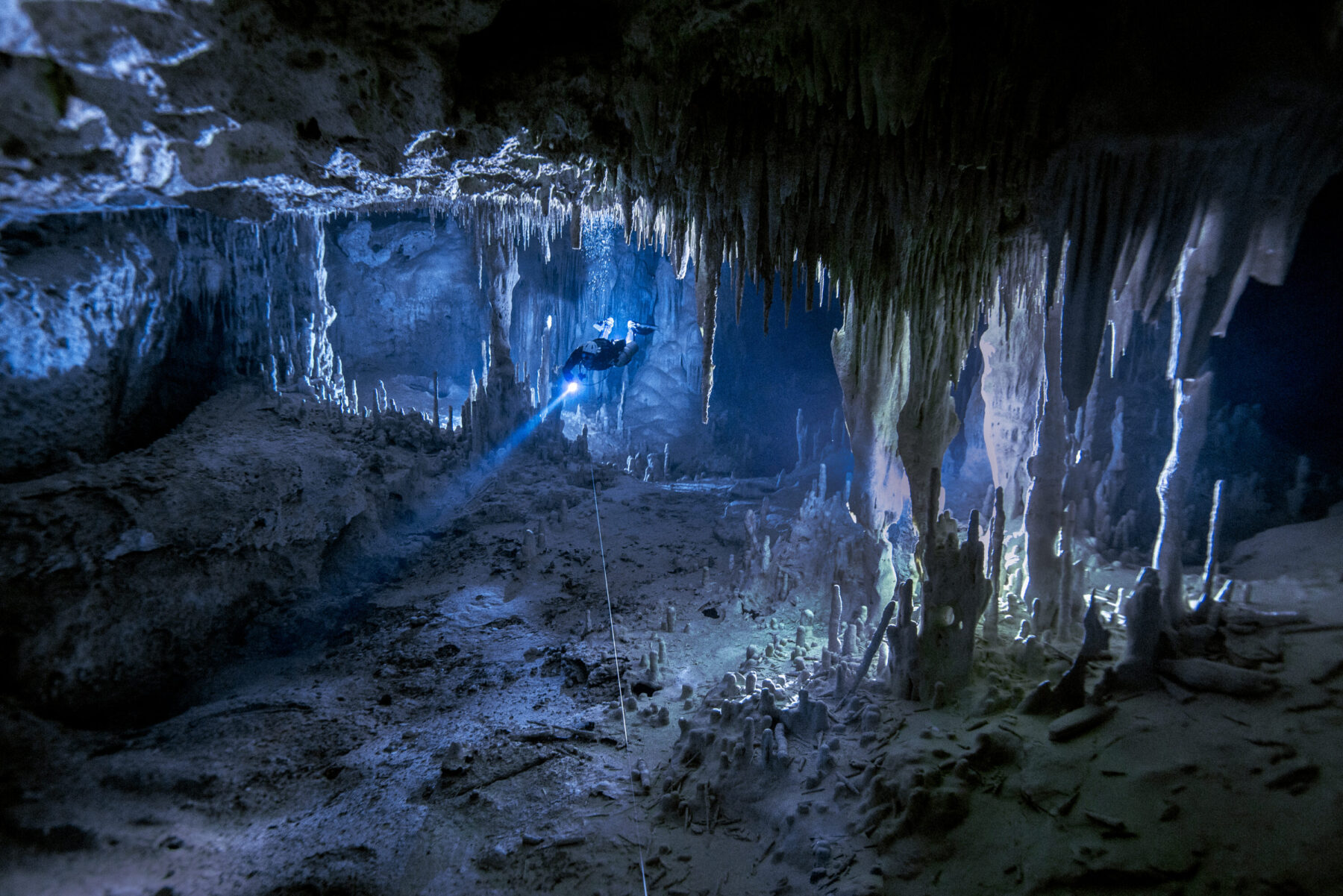
Home Story A Deeper Understanding
A Deeper Understanding
Feature type Story
Read time 15 mins
Published Jun 28, 2022
Author Ben Horton
Photographer Ben Horton
Adventure is full of risk. It’s part of the allure. From the outside, those risks can look even greater, in some instances unacceptably high. The reality though is that anyone operating at the top of the game, whatever their chosen discipline, is equipped with the skillset and the knowledge base to effectively operate in those environments – and more importantly able to calculate the unknowns accordingly. But it doesn’t come easy. Top adventurers are often some of the most well-qualified individuals on the planet. Their unfaltering dedication to meticulously updating their knowledge banks and skillsets to be the best they can be is what ultimately ensures the safety of themselves and those around them.
Explorer and adventure photographer Ben Horton, knows this as well as anyone. Having spent years refining his craft, here, he explores the strength in knowledge.
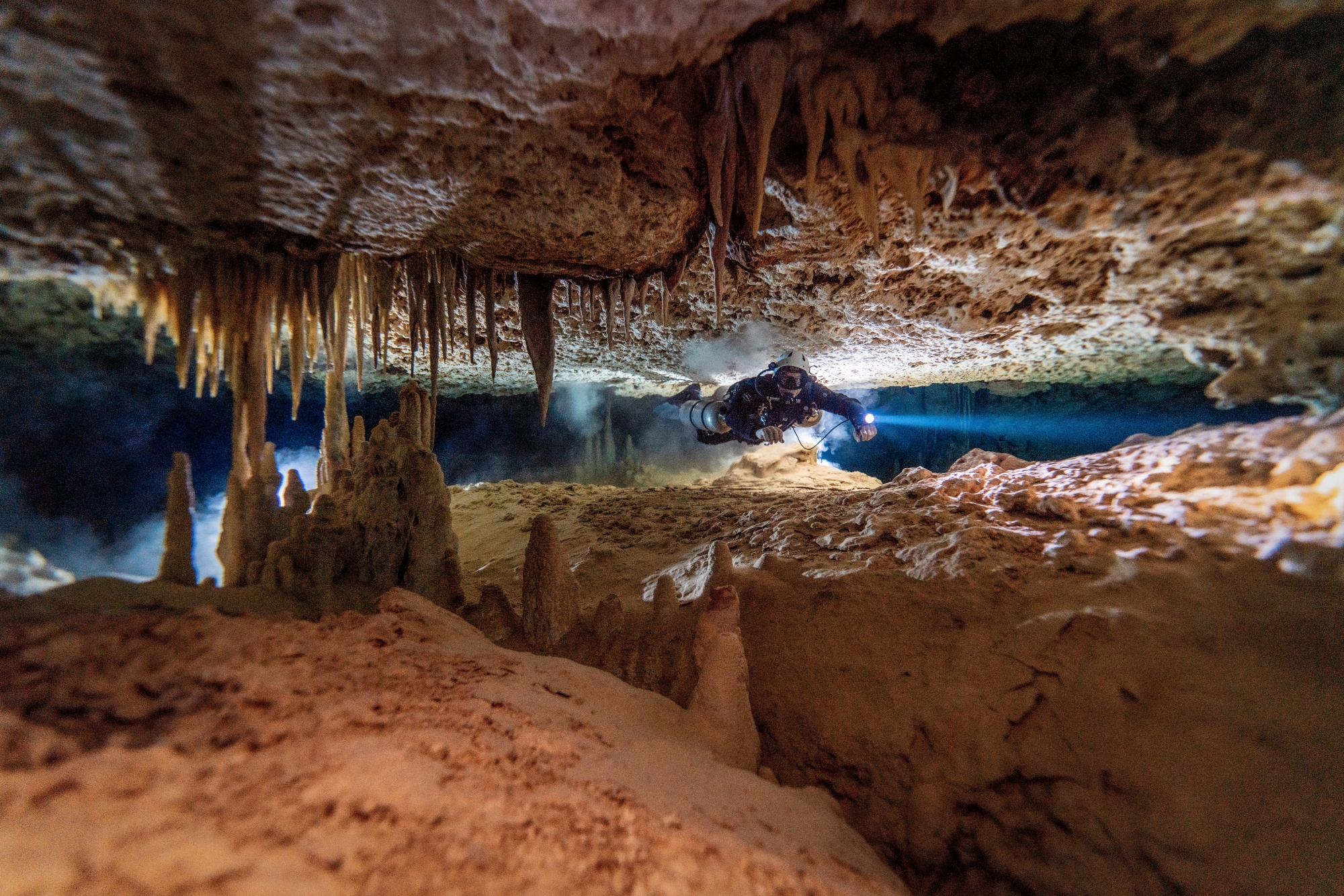
Km Davidson moves through a beautiful tight passage near Tulum, careful not to disturb too much silt from the cave floor.
Fear comes from not understanding. It’s a phrase that I repeat to myself when I am presented with something that scares me.
If you’re afraid of swimming with sharks, it’s probably because you don’t understand them. If you’re afraid of hiking alone through the wilderness, it’s probably because you don’t understand that environment. In adventure sports, it often means you simply haven’t developed the skills and awareness necessary to visualise the path to a positive outcome.
Most people’s perception of cave diving would put it at the very top of the list of dangerous sports. I was first asked to learn to cave dive for an upcoming film project and I shut the idea down outright.
Generally, I gravitate towards experiences that seem ‘off limits’ to most – experiences that require unique skills, fear management and time dedicated to understanding your environment – cave diving felt like rolling the dice. I’ve spent most of my life open water diving in the ocean and freediving. I consider myself something of an expert on being underwater, but I trust statistics. And the statistics around cave diving didn’t look good.
My preconception was very much based on fear, and I knew it. So eventually I agreed to, at the very least, go through the training. If I didn’t like it, I’d pull the plug.
A few months later, I found myself sitting in the back room of ProTec diving centre in Tulum, Mexico. Opposite me, a tall, muscular, tattooed man with a clean-shaven scalp. On first appearances, Kim Davidsson struck me more as a bouncer than a diver, at least until his sense of humour broke loose. As Kim gave me a breakdown of his experience as a cave diver, explorer and instructor, it quickly became apparent that I’d stumbled into the classroom of one of the most accomplished and capable instructors in the world.
Day one, a lesson in statistics: The majority of cave diving accidents don’t happen to cave divers. Open water divers like me, curious about what’s just inside the cave entrance, can’t resist. They kick up silt, lose their sense of direction and panic. Floating, suspended in total darkness, it’s almost impossible to reorientate yourself. Up and down become ambiguous, and without any training in how to handle the situation, your chances of self-rescue are slim.
When a trained cave diver has an accident it’s usually the result of a navigational error, a wrong turn, swimming deeper into the cave beyond the limits of your air supply. In a cave, of course, you can’t just swim to the surface.
Over the following month, Kim dismantled my concept of my own capabilities as a diver, refining my skills and systems with an attention to detail that made me feel like I was ready to be an astronaut. Kim taught me to navigate blindfolded, to break down and reassemble my equipment underwater and to constantly recalculate my gas supply whilst moving through complex environments. I can now swim backwards using just my toes, so I can back out of tight spaces without disturbing silt on the cave floor.
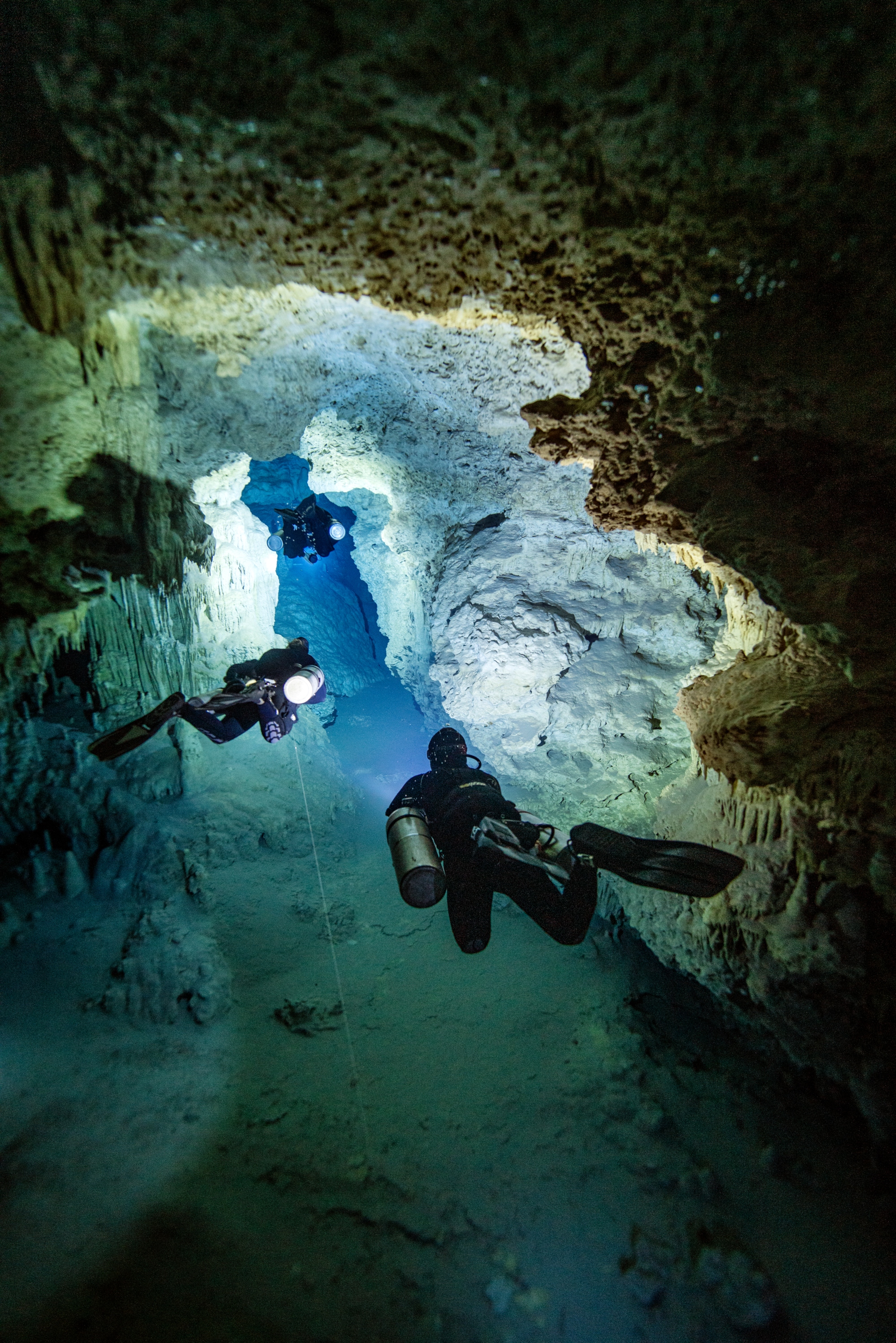
Floating, suspended in total darkness, it’s almost impossible to reorientate yourself. Up and down become ambiguous, and without any training in how to handle the situation, your chances of self-rescue are slim
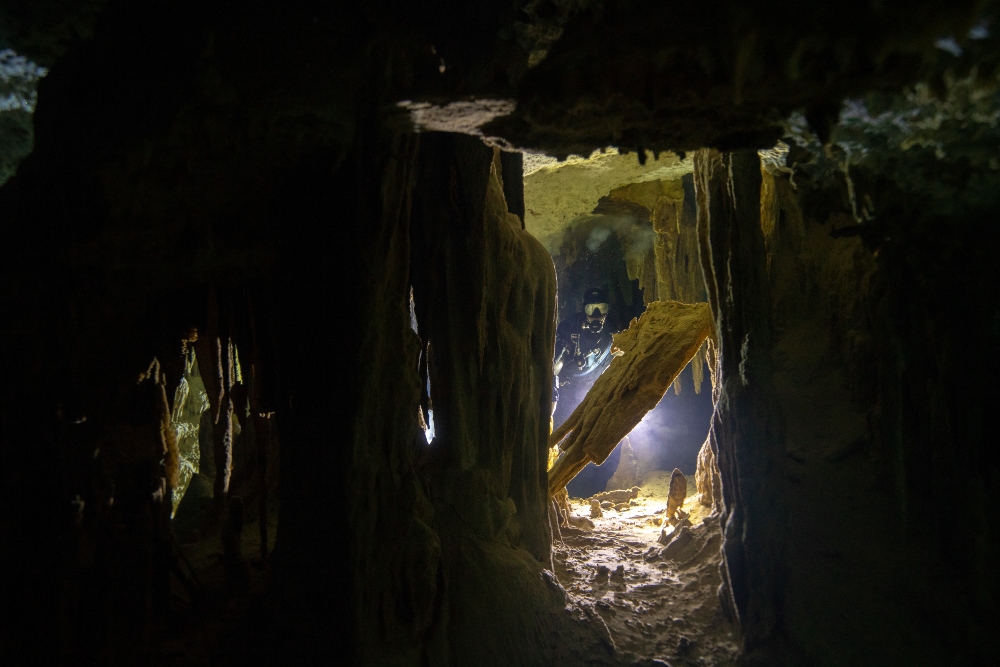
A diver makes their way through obstacles in a narrow corridor. It’s easy to understand the dangers of disturbing the cave floor in such tight quarters.
For me, the most exciting part of the training was what Kim called the stress test. Pretty much every training dive ended with a test of this sort. Deep in a cave, Kim would turn off his lights and hover in the shadows, out of view. On this occasion, my partner and I, navigating through a new section of cave towards our exit point, don’t feel Kim at all. Suddenly, my regulator starts to free-flow, causing a sudden loss of precious air from my tank, my buoyancy compensator overinflates and pins me to the roof of the cave and my mask is knocked off my face. It’s a simulation, but a panicked diver grabbing at my equipment or a collision with the cave wall could ultimately turn this scenario into reality.
Whilst switching tanks, stopping the first from free-flowing and attempting to get my buoyancy back under control, I feel around for my line – the path to safety. I somehow lose a fin, and I see that my partner has also had his own brush with the arbiter of chaos. Once we have things under control and Kim can see that we’ve safely organised ourselves, he blindfolds us. We’re now tasked with swimming for 30 minutes through the maze-like system of subterranean passageways in a quest for open air. It sounds extreme, but I can honestly say that I no longer have that fear of cave diving.
In its place, I have a much greater respect for and understanding of that particular environment. I know now that I can handle a series of events, one that is statistically less likely to happen than a bear attack in Los Angeles.
The cave systems in Tulum are the largest in the world, with passages connecting the cenotes like the roots of a vast forest. The cenote called Jailhouse requires diving through water so murky you can’t see your own hand pressed against your mask, and following the line through a narrow crack. It feels like it takes forever, but as you descend into the darkness, suddenly everything opens up and you arrive in perfectly clear water.
As a conservationist, understanding the connectivity of these subterranean waterways has opened my eyes to the impact of things like groundwater pollution on these environments. It’s no longer possible to dive the caves under the city of Tulum, they’ve been filled with sewage and runoff from the streets which eventually makes its way into the ocean where tourists swim on what look like pristine beaches.
Just 45 minutes away from Tulum, a massive development project is underway next to the Sian Ka’an Biosphere Reserve, a UNESCO World Heritage Site and one of the most protected places in Mexico. Even as a National Geographic photographer, it’s difficult to get permits to enter the area, yet the preserve is directly downstream of the development.
Suddenly my regulator starts to free-flow, my BC over-inflates and pins me to the roof of the cave and my mask is knocked off my face
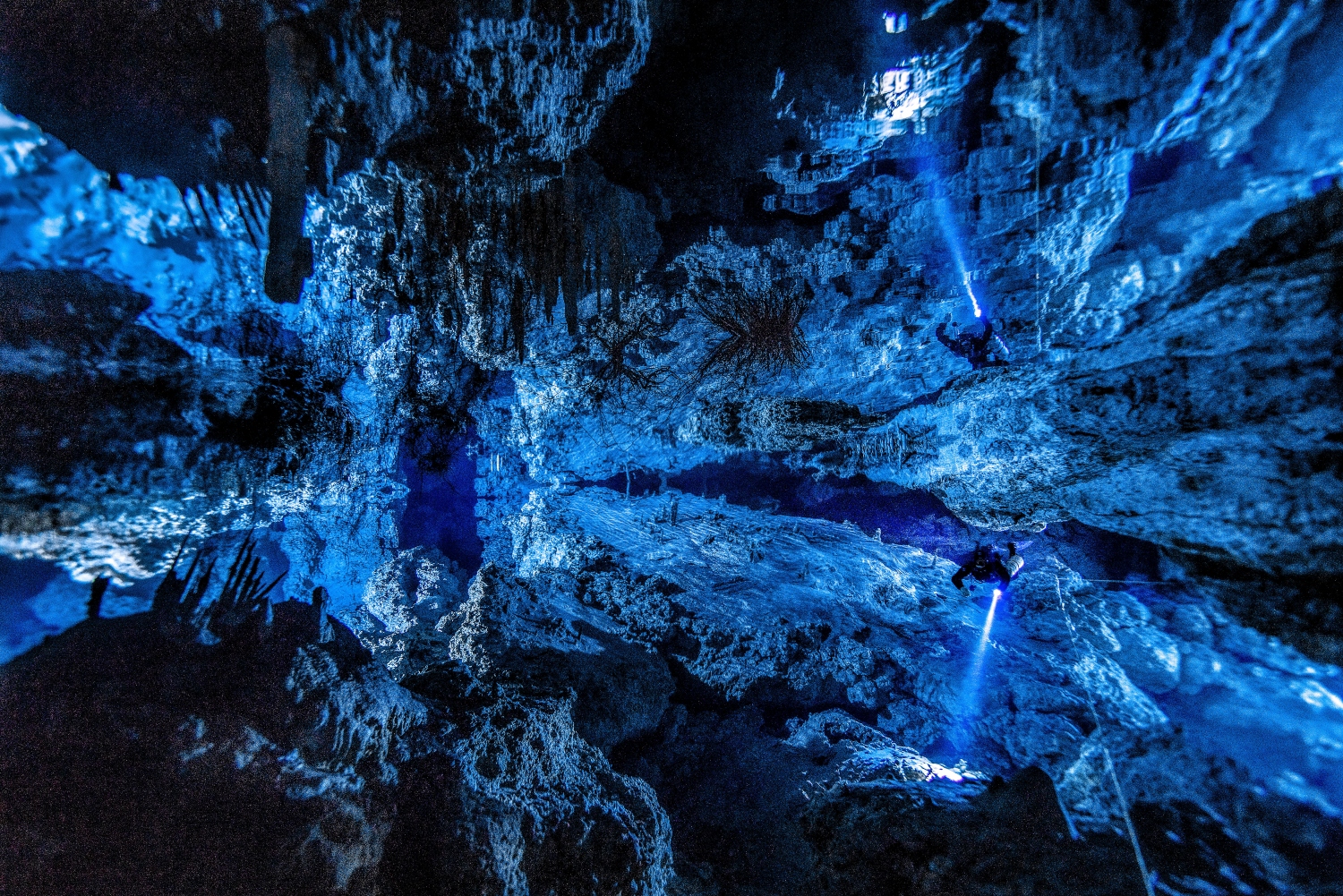
Kim Davidson swimming through an ornately decorated cave in Tulum in hypnotically clear waters.
With proper training completed, I am privy to experiences that very few people are. Swimming through vast, Ice Age caves, suspended in total tranquillity in chambers decorated with intricate speleothems (geological formations by mineral deposits which accumulate over time), discovering skeletons from long-extinct species. It’s hard to learn much about something so precious without feeling directly connected to it, to care, and to become an advocate for its preservation. These caves are a time capsule of earthly formations dating back thousands of years, and all of it could be lost to condos and timeshares.
If you are considering learning to cave dive, or skilling up in any adventure discipline, do it. Cave diving taught me to rely on myself completely, and to be intimately aware of my personal ability and my psychology. Diving in cave systems is the closest I’ll ever get to exploring a distant planet. With the proper training, I learned to manage the danger and so gained easy access to true exploration, the ability to see places that have never been seen by human eyes.
In a world where exploration and adventure are becoming an a-la-carte service, where you can pay someone to drag you to the North Pole or the top of Everest, the mastery of craft allows us to really experience adventure and in some cases genuine exploration on our own terms.
Don’t miss a single adventure
Sign up to our free newsletter and get a weekly BASE hit to your inbox
Other posts by this author
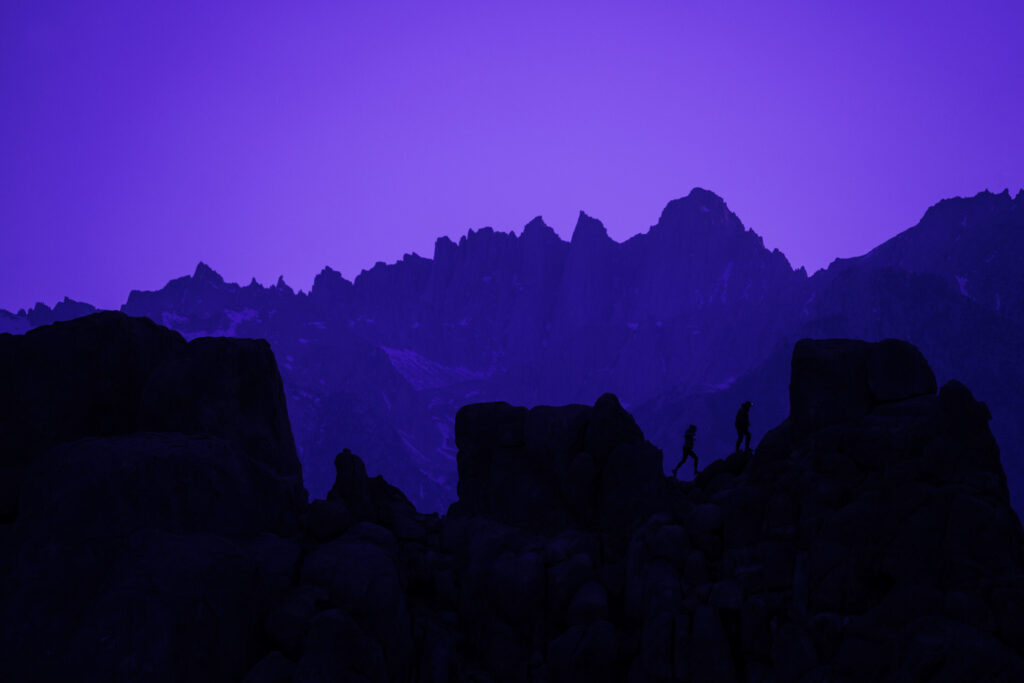
Story • Ben Horton • Oct 25, 2022
My Adventure Playground: The Alabama Hills
A personal guide to getting the most out of this sometimes eerie but strikingly unique landscape

You might also like
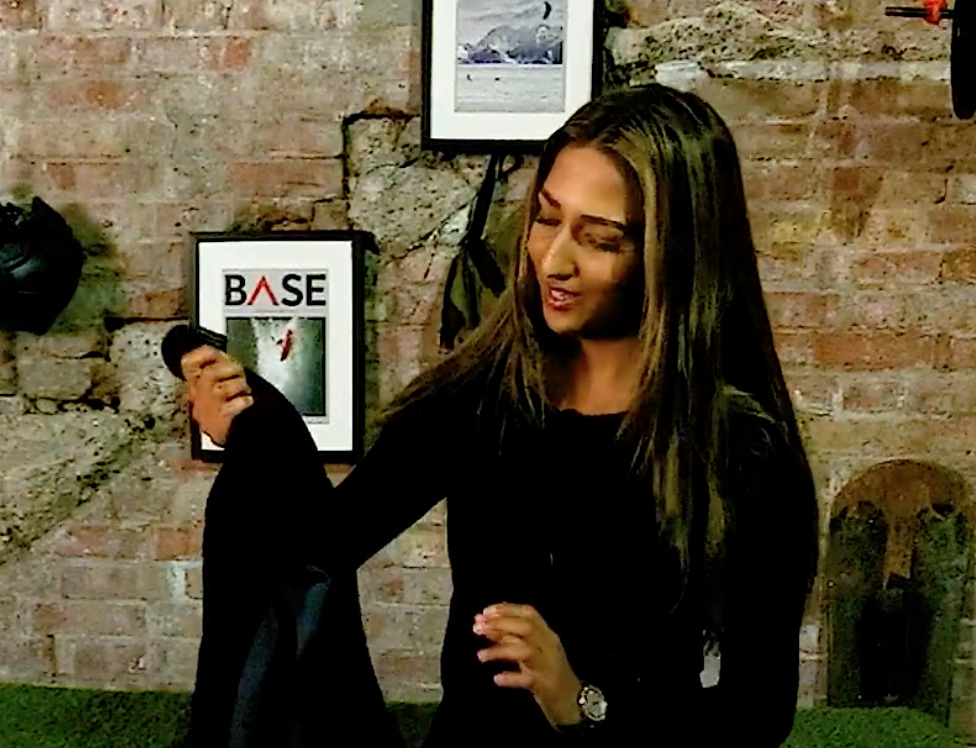
Video • BASE editorial team • May 09, 2023
Top Five Scariest Things About Scuba Diving
Tips and tricks to overcome your fears, find your sea legs and take the plunge
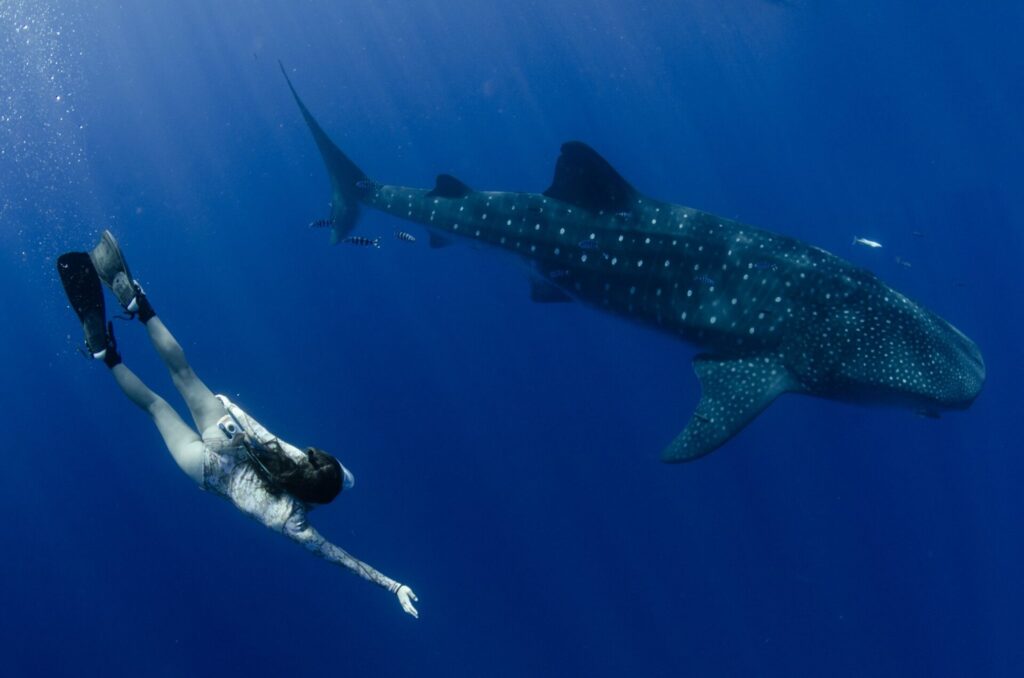
Story • Will Appleyard • Dec 01, 2021
Guardians of The Blue
The pursuit of underwater giants in the mid-Atlantic
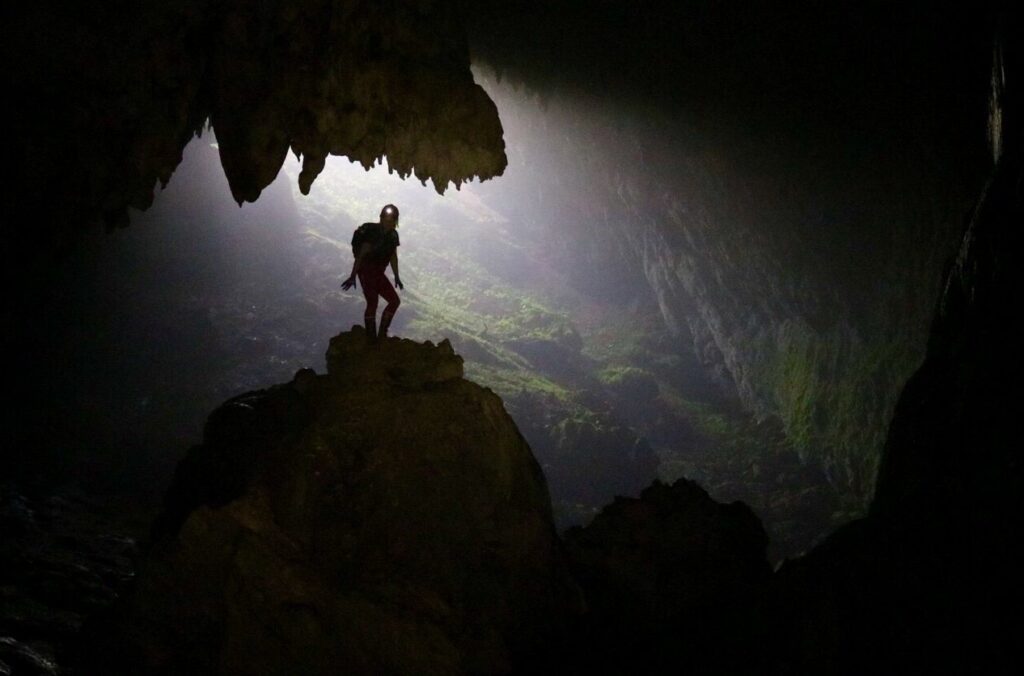
Story • David Weimer • Nov 02, 2021
The Lost Kingdom
Subterranean expeditions into the Parque Nacional de las Cavernas del Río Camuy
